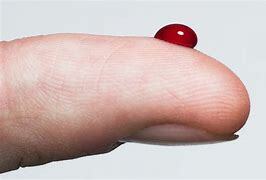The inspiration for this week’s blog was ignited by a shopping trip I took this weekend. We are creeping into late September and if you have been into a store recently, you may have noticed ghosts, ghouls, skeletons, blood and all things Halloween.
I VANT TO DRINK YOUR BLOOD…
As I passed through the Halloween section, I noticed Dracula and fake blood prominently displayed. It made me think about actual blood. Many faint from the sight of blood yet it is vital to our existence. Here is why.
BLOOD
Blood is the red fluid that circulates in the human body that collects in the heart through veins and again circulates from the heart to the whole body through the arteries. Blood transports oxygen and nutrients to the lungs and tissues, forms clots to prevent excess blood loss, carries cells and antibodies that fight infection, brings waste products to the kidneys and liver to filter and clean the blood and regulates body temperature.
FUN FACTS
- The amount of blood in the human body is 6 to 7% of the total body weight.
- About 60% of the blood is found in the form of plasma and the remaining 40% is in the form of blood.
- Research has shown that mosquitoes prefer blood type O.
- The President of the United states always carries the president’s blood type in the car just in case of emergencies.
- The amount of blood in a pregnant woman’s body will have increased by 50% by the 20th week of pregnancy.
- Not every animal has red blood. Spiders, lobsters, and snails have blue blood due to the presence of a protein haemocyanin which contains copper.
- The lifespan of red blood cells is 120 days.
- Blood is red because the color of haemoglobin (a protein) is red which is found in red blood cells.
- Permanent brain damage or death can occur within 4 minutes if a person’s blood flow stops. You must continue CPR until a person’s heartbeat or breathing returns or trained medical help arrives.
ULTRASOUND/BLOOD CONNECTION
Doppler ultrasound is a noninvasive test that can be used to estimate the blood flow through your blood vessels by bouncing high frequency sound waves off circulating red blood cells. A regular ultrasound uses sound waves to produce images but can’t show blood flow.
A Doppler ultrasound may help diagnose…
- Blood clots
- Poorly functioning valves in your legs (venous insufficiency)
- Heart valve defects and congenital heart disease
- A blocked artery (arterial occlusion)
- Decreased blood circulation in your legs (peripheral artery disease)
- Bulging arteries (aneurysms)
- Narrowing of the arteries such as in your neck (carotid artery stenosis)
HDD
At High Desert Doppler, we do ultrasound. If your healthcare provider determines diagnostic ultrasound is indicated, more often than not, we can see you that very day. There is no reason to wait weeks or months for an appointment. Call 505-350-3397 to set up your appointment. Let’s keep those veins, arteries, blood flow and all your body parts in good working order!

